Replacing gates and wickets and carrying a cart to the roof of the barn are just some of the slightly eccentric, but also forgotten old customs and New Year's Eve pranks. The magical atmosphere of one such night of the year made our ancestors come up with the strangest ideas.
Where did New Year's Eve come from?
It all started quite a long time ago, at the turn of the last millennium. The people of Europe, believing the prophecy of the Greek oracle of Sibyl, believed that on the last day of 999 the world would end. According to the prophecy, the destruction of the world was to take place thanks to the dragon Leviathan, closed in the basement of the Vatican, by Pope Sylvester I in the 4th century AD. It was therefore believed that the reigning of New Year's Eve in 999 would be the one to release a deadly beast . Angry with many years of waiting, Leviathan was supposed to destroy and burn absolutely everything that stood in its way.
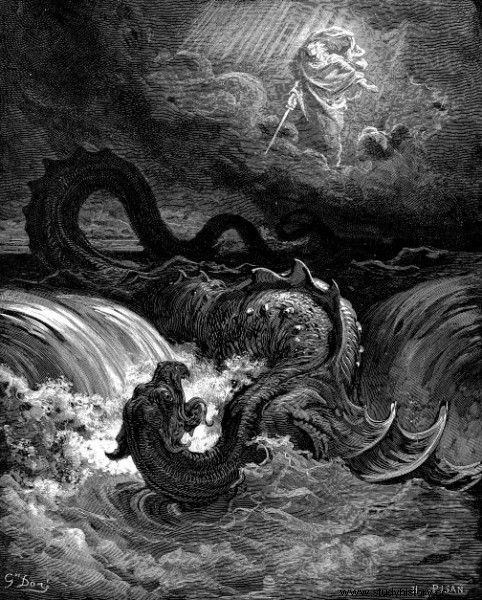
The Destruction of Leviathan by Gustave Doré's 1865 graphic
When the long-awaited last day of 999 finally came and nothing happened, there was general joy and people started to dance and sing. In memory of this happy salvation, every year the end of the old and the beginning of the new year were lavishly celebrated . Apparently, it was then that, when going out to the people gathered on the streets of the Vatican, Pope Sylvester II, for the first time in history, gave the Urbi et Orbi blessing - the City and the World. Later, in memory of this event, December 31 became the feast of St. New Years Eve.
In the Polish lands
The general celebration of the beginning of the new year appeared in Poland relatively late, only at the turn of the 19th and 20th centuries. Previously, it was a custom reserved for wealthy aristocratic families. Interestingly, in the Middle Ages, the new year began on Christmas. With time, the customary New Year's Eve spread throughout society, and the beginning of the 20th century was a time when customs and traditions specific to given regions and countries were formed throughout Europe.
In Poland, this special night was celebrated especially intensely and happily outside the city. The young men spent her making up the strangest jokes for the people of the whole village . Of course, the most popular farms were those where the maidens lived.
A whole range of pranks
When the hosts were busy with New Year's Eve madness or when they were overwhelmed by sleep, New Year's pranksters stepped into the action. The simplest joke from the repertoire of the time was to paint the windows with soot or colored paints. Characteristic decorations, made of branches, dry leaves, or other attractive-looking gifts of nature, were also placed on fences and gates, which ... well, after the New Year's Eve madness, they were not always in their place.
It was a fun prank to take the gates out of their hinges and place them elsewhere. In the morning, the hosts often waited for a walk around the village in search of their gate. Thanks to this, of course, he could personally wish all his neighbors a Happy New Year. When the change was not an option, the wicket or the gate wing landed in a different, equally unobvious place - in a nearby ditch, in a field or near a forest .
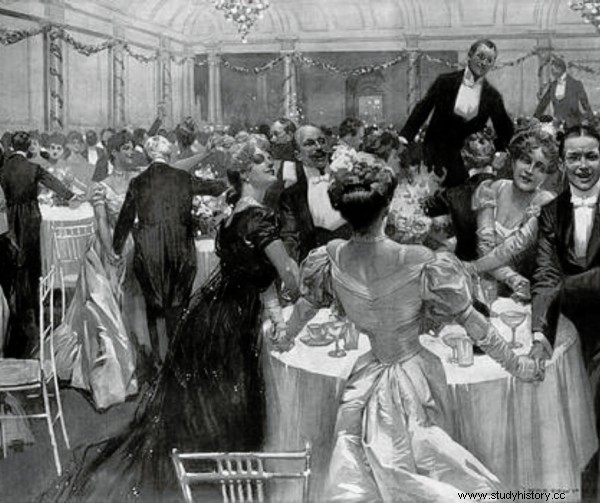
The beginning of the 20th century is a time when customs and traditions specific to given regions and countries were developed throughout Europe
Another indiscriminate habit was animal replacement. In the morning, the owner of the cows could find a neighbor's cattle or livestock of a completely different species. There were literally pranks - of a higher rank. In some regions of Poland, the New Year's Eve tradition for the bravest was to quickly dismantle wooden ladder carts, only to reassemble them a moment later in some crazy, high place - for example on the roof of a barn.
A habit completely forgotten
Oskar Kolberg - a well-known Polish ethnographer and folklorist, in one of his studies on old Polish customs, devoted a few pages to an interesting and, unfortunately, already completely forgotten tradition - New Year's ruffians. In fact, it was a bit like caroling, but it was a bit more strenuous.
Young boys wrapped straw and put on high hats made of the same material on their heads. Holding swords made of wood or sticks on New Year's Eve or on New Year's Day, they wandered through the countryside and burst into the house unannounced. Singing on their lips, they played small pranks - they knocked over chairs, spread rubbish or ashes, and sometimes poured dirty water on the floor for the housekeepers.
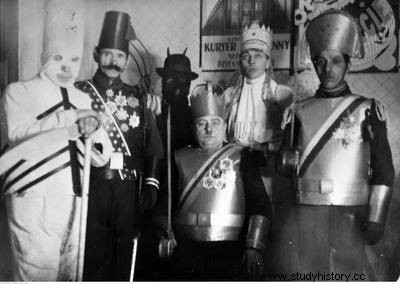
Carol singers in the editorial office of Ilustrowany Kurier Codzienny in Łódź
Fortunately, no one blamed them for these mischief. A visit to the house of New Year's boys heralded happiness and success for the whole family in the coming year . It was also said that "Where the lad is in the house, happiness will be in the house, the cow will calve, the girl will marry." For their exploits, boys often received sweet gifts or fresh eggs or milk.
Fortune telling with… champagne
In the 1920s, when champagne began to appear in salons during the more and more popular New Year's Eve parties, it was normal to fortune-telling from a glass. The way the sparkling bubbles arranged could herald prosperity or problems.
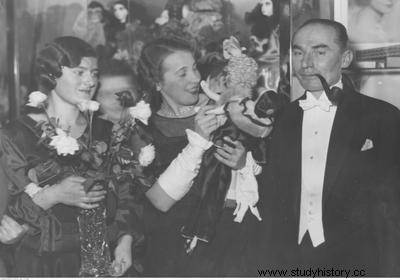
New Year's Eve Ball in Warsaw 1931
If they rose steadily and slowly from the bottom to the top, they were good omen and signified a quiet year. On the other hand, the bubbles raging in the glass heralded adventures or problems and changes in life . When the bubble chains crossed, they were a warning to the drinker - in the new year, pay attention to your health and take care of your home finances.
In Europe
Many old New Year's Eve customs are cultivated in Europe to this day. For example, invariably since 1909, in order to ensure their happiness and prosperity, at exactly midnight, with each clock strike, they eat one grape. 12 balls of the vine correspond to twelve months of the year. According to another version, one wish should be made when swallowing each of the grapes.
The people of Panama have been burning puppets on New Year's Eve for many years. They symbolize the problems and misfortunes that befell them in the year that is about to end, and fire is to drive them away into oblivion. This tradition does not disappear, and from year to year it takes on a bolder form. Recently, Panamanian people additionally "decorate" the puppets they create with masks or printouts of the faces of politicians they dislike .
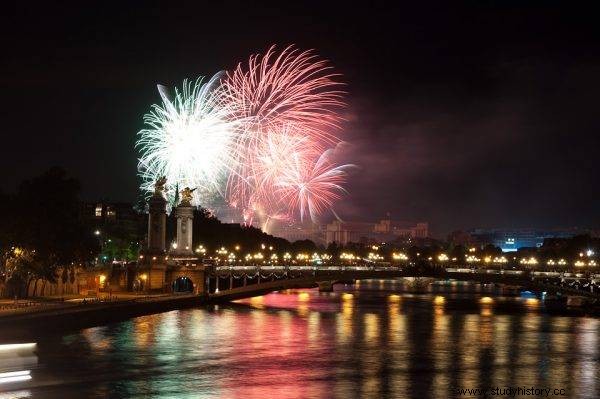
As the old proverb says:every country is custom. There is nothing else for us to do but to take advantage of one more old Polish tradition and wish us another year!
As the old proverb says:every country is custom. There is nothing for us to do but take advantage of one more old Polish tradition and wish ourselves a year! Few people know that these wishes come from several hundred years ago, from the time when the New Year or New Year's Eve was not celebrated yet. On Christmas Eve, wishes were made "until the year of August" - where the word siego is the genitive of the Old Polish pronoun "sie", "sia" (today known as ten, ta). Therefore, these wishes were read as - until this year (may we live to its end in happiness and prosperity).
Bibliography:
1. Customs in Poland From the Middle Ages to the Present, ed. Andrzej Chwalba, Warsaw 2015.
2. Renata Hryń-Kuśmierek, Polish Year, Customs and Rites, 2010.
3. Oskar Kleeberg, People. His habits, way of life, speech, legends, proverbs, rituals, witchcraft, games, songs, music and dances, Krakow 1890.
